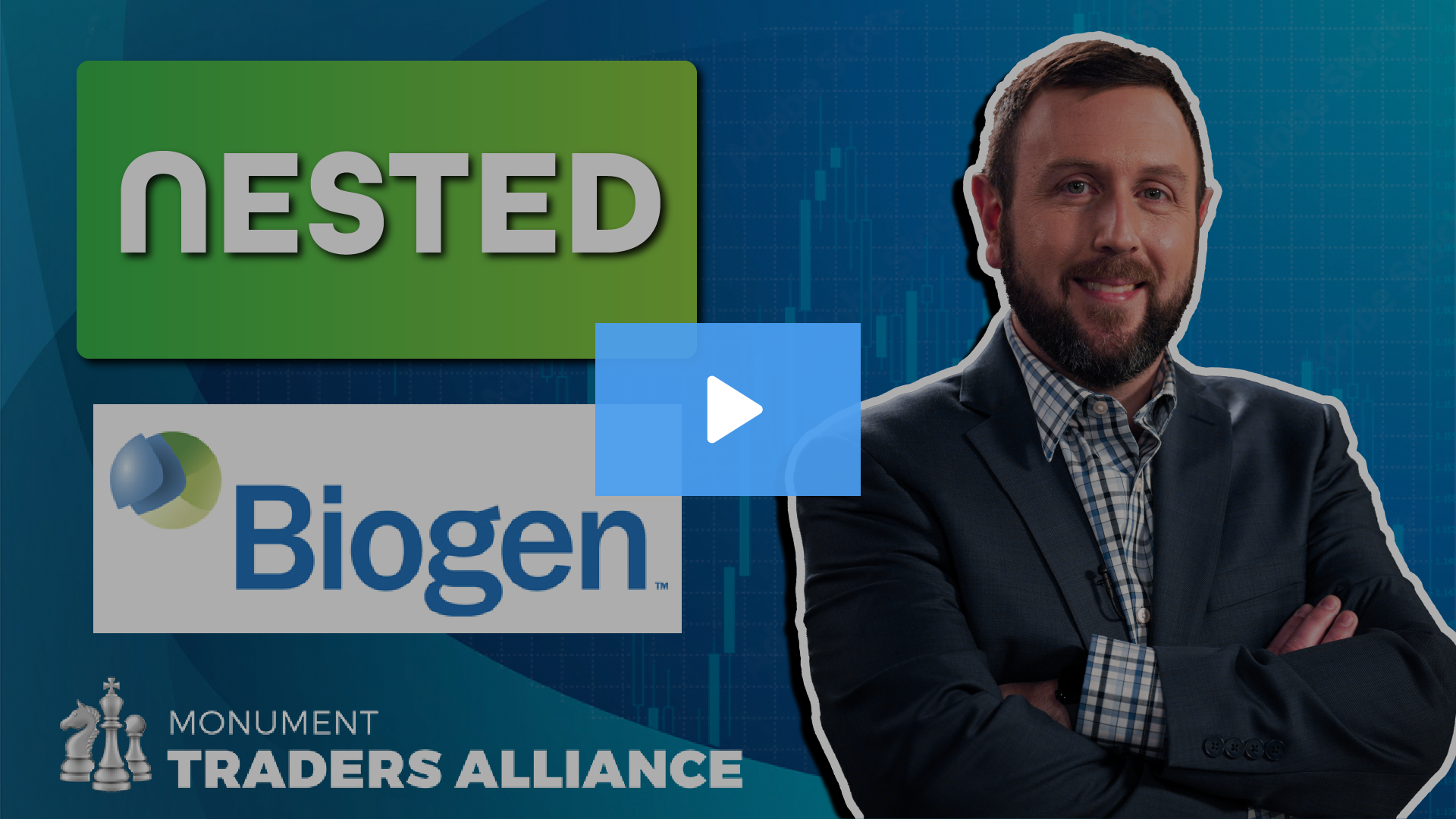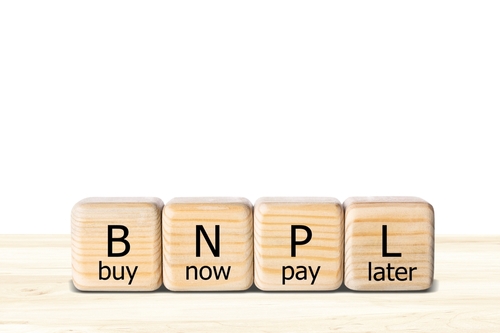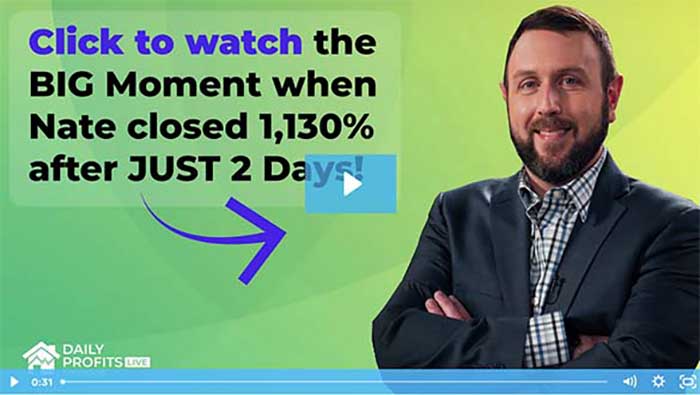My 2-Step Earnings Strategy
Earnings season is around the corner…
We’ll have hundreds of trading opportunities starting in just a few days and lasting for two months.
Yet, most traders won’t make money from trading earnings, and a good chunk will ignore them completely.
Why?
Because they lack a solid trading plan.
They view earnings trades as a roll of the dice…a gamble.
And because they’re not prepared, they make dumb mistakes on incredible profit-taking opportunities.
It’s a shame because when you come prepared, like we did in Daily Profits LIVE, finding setups like this late Monday Lotto play we took in Spotify is pretty straightforward:

Just one of several trades I took in Daily Profits LIVE
Fortunately, it’s not too late to get ahead of the curve.
The real action doesn’t begin until Friday when the banks start to report.
So, in the next few days, I’m going to give you the same advice I offered Daily Profits LIVE members.
By the end, you’ll how to find the BEST trades and select the right options that give you an edge while reducing risk.
Earnings & Options
As an options trader, I have to pay attention to three things:
- Time Decay
- Price movement
- Implied volatility
Let’s start with the first one.
Earnings & Time Decay
If I buy a call or put option, every day that I hold the option costs me money in extrinsic value.
Extrinsic value is essentially the premium paid for the possibility that the option’s value may increase before it expires.
That’s why longer-dated options are more expensive, while shorter-dated ones are cheaper.
Time decay works at an exponential rate shown in the graph below.

That’s why I always tell Daily Profits LIVE members to give themselves the gift of time (AKA choose expirations further out in time).
But keep this in mind…
…options that expire before an earnings date will NOT include the earnings premium that builds in for earnings. Only options that expire after earnings will include this earnings premium.
I’ll discuss this more in the implied volatility section.
Now, let’s talk about price movement.
Earnings & Price Movement
News events, like earnings, can cause a stock’s price to whip around outside of its typical trading range.
Check out this daily chart of Nvidia as an example.

Source: TradingView
Between the February earnings dates in February and May, Nvidia’s stock traded in a narrow range.
But once the company reported earnings in late May, the stock shot up, kicking off a multi-week run. Had I held call options through this time, I probably would have made money.
However, it’s also possible to get the direction right and still lose.
That’s because of implied volatility, which you can think of as demand for options.
Implied Volatility & Price Movement
Before earnings, traders and investors buy options because they don’t know how the stock will react after earnings. They’re trying to bet or hedge against the stock moving higher or lower because even good earnings can send a stock lower and vice versa.
However, once earnings are out and the stock starts to move, the uncertainty about what could happen is removed, so demand for options drops.
This earnings premium grows up into earnings and then evaporates the day after.
This is why I will often not hold options through earnings if they expire shortly after.
But that doesn’t mean I won’t hold an option through earnings at all.
How do I choose what to do and when?
That’s where my 2-Step Setup Process comes into play.
2-Step Setup Process
To ensure I only take the right trades, I created a two-step process to help me quickly decide whether to take a trade and how to play it.
Step 1: Find a technical setup
No matter what, I stick with the methods and strategies that made me the millionaire trader I am today.
That means I look for A+ TPS setups. These require:
- A clear upward TREND
- Consolidation PATTERN
- SQUEEZE indicator with the Bollinger Bands trading inside of the Keltner Channel.
A+ setups occur when the 8-period exponential moving average (EMA) is over the 21-period (EMA), which is over the 55-period EMA.
Step 2: Match the Timeframe
Once I’ve found the timeframe I’m going to work with, I need to decide on the right expiration date.
As a rule of thumb, I go out 2x-3x longer than I expect the trade to take based on the timeframe.
For example. An hourly timeframe should take a few days to a week to play out. So, I’d select expirations 2-3 weeks out.
If the timeframe is a 15-minute, I’d go out 1-2 weeks at most.
A daily timeframe would have me going out 1-2 months.
That’s easy without earnings. But what happens when you’ve got an event right in the middle of your timeframe?
Here’s what I do.
Let’s say I have an hourly chart and expect the setup to be completed in a week. If earnings fall within the first day or two, I move on. There’s no point in playing the setup since it won’t have enough time to form.

However, if earnings land somewhere in the middle or towards the end, then I will usually go out a bit further with my expiration date and play the setup. This allows me to take advantage of that implied volatility build that usually occurs in the days before an earnings event.
Using the hourly chart example above, I will go out three weeks for expiration to play the trade if earnings are one week from today.
This lets me take advantage of the implied volatility increase while reducing my risk by making the option’s price less sensitive to price movements.
Narrow Your Search to the BEST Setups
Let me give you all some friendly advice here.
During earnings season, time is of the essence. You want to identify and evaluate as many opportunities as quickly as possible.
Doing this manually can be a challenge.
That’s why I had some people much smarter than myself build the S.A.M. AI Scanner.
Unlike my slow brain, it can evaluate every stock in real time and display the results immediately.
As someone who always worried about missing trades, this was a game-changer for me.
Do yourself a favor and check it the S.A.M. AI Scanner for yourself.
More from Trade of the Day
How Long Can This Silver Run Last?
Jan 15, 2026
Inside the Amazon Decision That Lost Millions
Jan 14, 2026
Fed Investigation Creates Trading Gold Rush
Jan 12, 2026

























